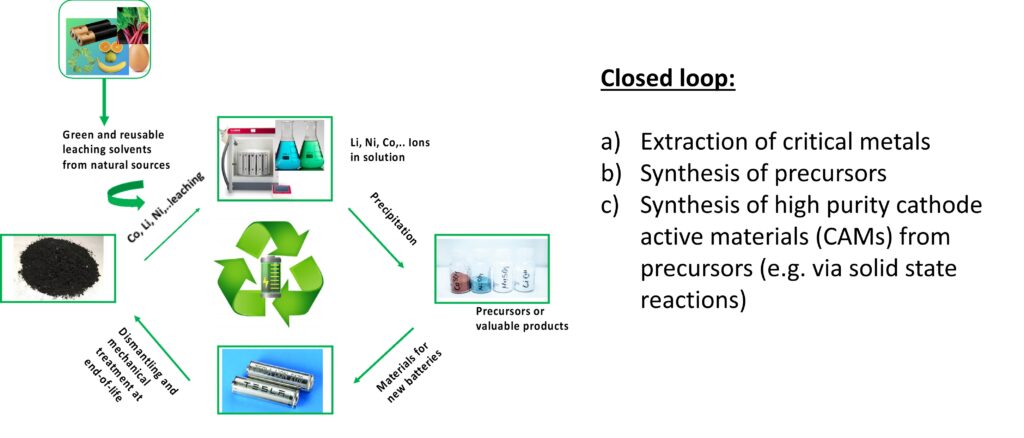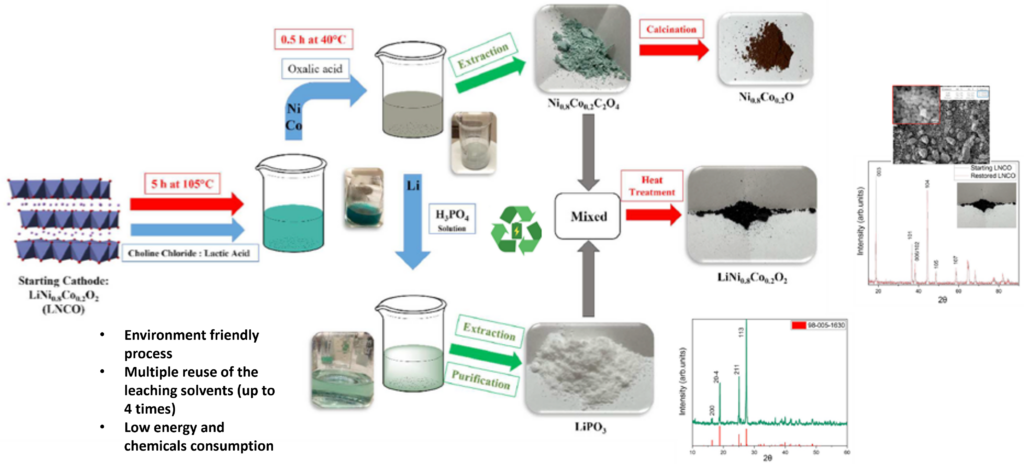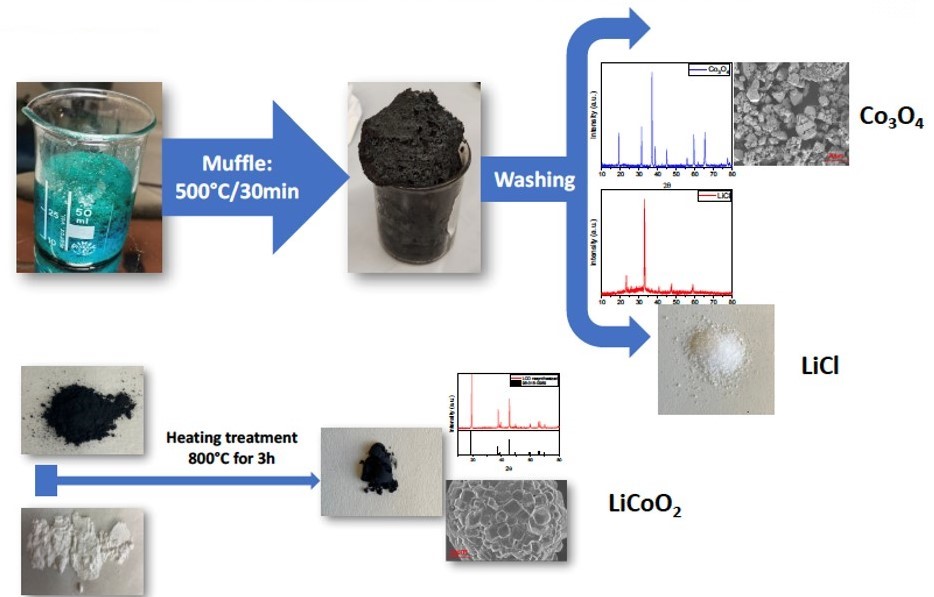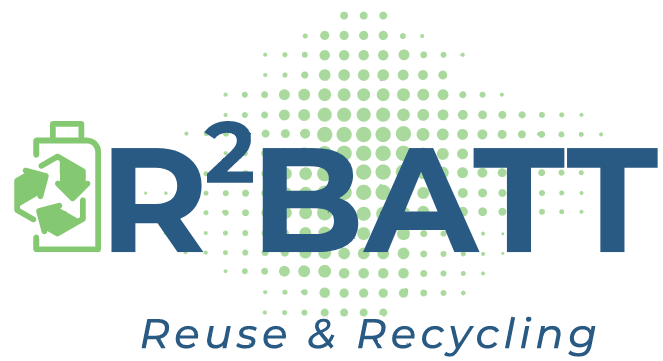
R2BATT aims to develop processes and technologies for the recycling of electrochemically active materials making up Li-ion cells through:
- the development of protocols for the extraction and separation of critical elements and compounds, based on ionic liquids or deep eutectic solvents
- the development of protocols for the extraction of polymeric components, solvents, and lithium salts with processes at ambient pressure or in supercritical conditions
- the development of measurement protocols for product quantification
- the development of sustainable chemical treatments for the treatment of black mass

Therefore, one of the focuses is Cathode Recycling, which can be obtained by following two paths:
- recycling 1° route = Solvo-Metallurgy
- recycling 2° route = Direct Recycling

Cathode Recycling by Solvo-Metallurgy:
a) Extraction step via soft-metallurgy (very high extraction rate and soft metallurgical conditions such as low T, shorter t)
b) Synthesis of precursors
c) Synthesis of high-purity CAMs



Another primary target of the R2BATT line of research is the methods validation in the reference use-cases:
- Battery pack disassembling & component sorting
- Separator recovery
- Cathode recovery:
- PVDF
- Precipitation as PVDF+C
- Purification
- Active Material
- Soft-solvometallurgy via DES (ChCl/LA 1:2) – 1st pathway
- Cathode Healing – 2nd pathway
- PVDF
- Electrolyte recovery
- Anode recovery

Since the materials characterization is fundamental both before and after the recovery steps of every component, R2BATT can provide and manage different techniques.
Cathodes components characterization (example):
- XRPD for the active material
- TGA to identify the composition
- ICP-OES to quantify the Li-content
- SEM for the morphology



Separators components characterization (example):
- DSC & FTIR to characherize the substrate
- SEM for the morphology


And, last but not least, it is fundamental to measure and evaluate the functional performances of fully recycled components

